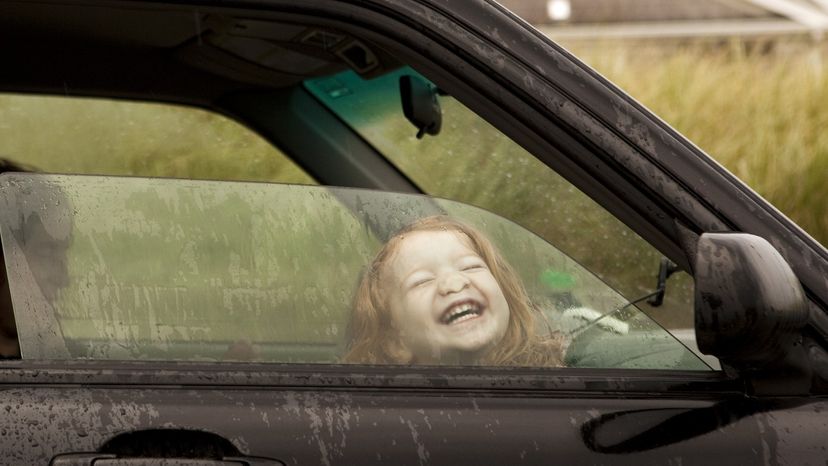Car doors are wired in many different ways, depending on which features are incorporated. We'll go through the wiring on a basic system -- one that allows the driver to control all four windows on the car and can lockout the controls on the other three individual windows.
A Basic System
On this system, the power is fed to the driver's door through a 20-amp circuit breaker. The power comes into the window-switch control panel on the door and is distributed to a contact in the center of each of the four window switches. Two contacts, one on either side of the power contact, are connected to the vehicle ground and to the motor. The power also runs through the lockout switch to a similar window switch on each of the other doors.
A simple power-window circuit
When the driver presses one of the switches, one of the two side contacts is disconnected from the ground and connected to the center power contact, while the other one remains grounded. This provides power to the window motor. If the switch is pressed the other way, then power runs through the motor in the opposite direction.
An Advanced System
On some cars, the power windows work in a completely different way. Instead of the power for the motor going through the switches directly, the switches are connected to one of the many electronic modules in the car (the average car contains 25). Some cars have one in the driver's door, as well as a central module called the body controller.
Cars that have lots of controls on the door are more likely to have a setup like this. Some cars have the power-window, power-mirror, power-lock and even power-seat controls all on the door. This would be too many wires to try to run out of the door.
Instead of trying to do that, the driver's door module monitors all of the switches. For instance, if the driver presses his window switch, the door module closes a relay that provides power to the window motor. If the driver presses the switch to adjust the passenger-side mirror, the driver's door module sends a packet of data onto the communication bus of the car. This packet tells the body controller to energize one of the power-mirror motors.
